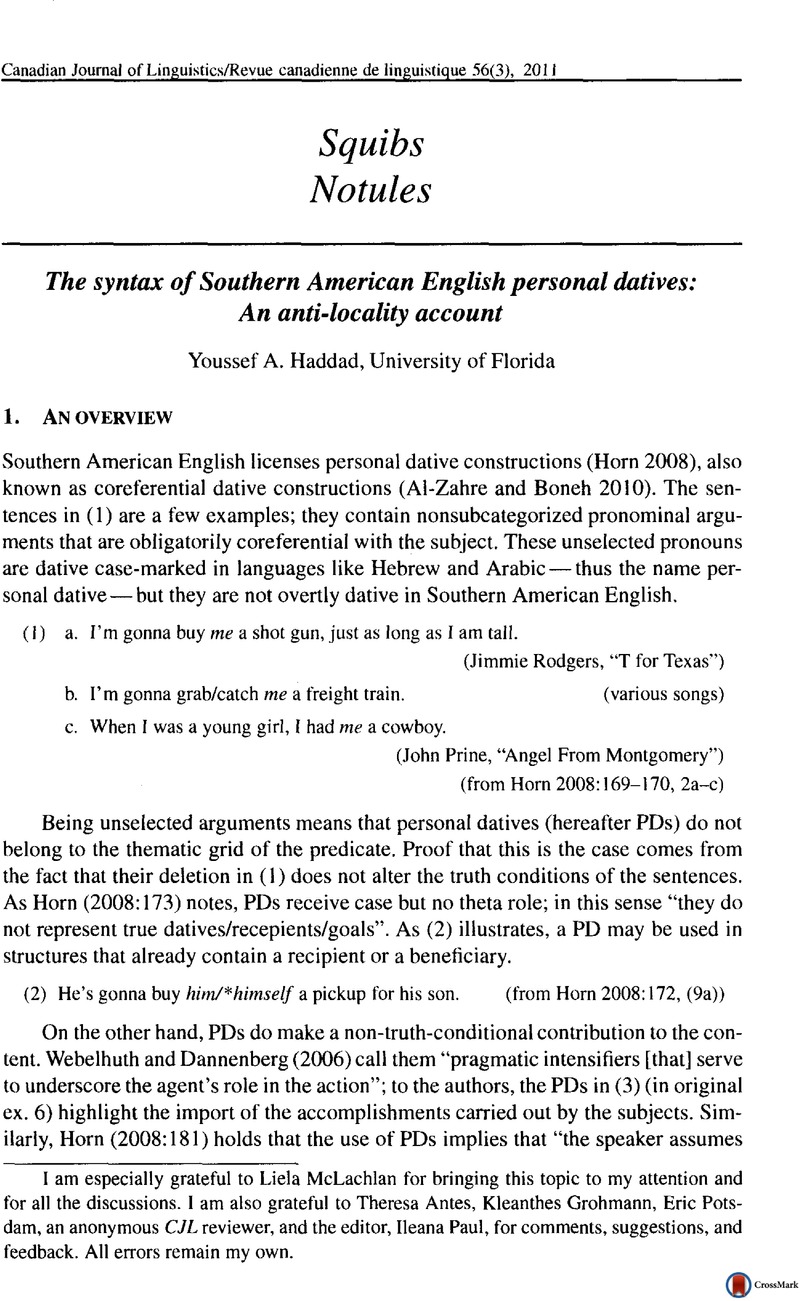Crossref Citations
This article has been cited by the following publications. This list is generated based on data provided by Crossref.
Haddad, Youssef A.
2013.
Pronouns and intersubjectivity in Lebanese Arabic gossip.
Journal of Pragmatics,
Vol. 49,
Issue. 1,
p.
57.
Haddad, Youssef A.
2014.
Attitude datives in Lebanese Arabic and the interplay of syntax and pragmatics.
Lingua,
Vol. 145,
Issue. ,
p.
65.
Wood, Jim
and
Zanuttini, Raffaella
2018.
Datives, data and dialect syntax in American English.
Glossa: a journal of general linguistics,
Vol. 3,
Issue. 1,
Wood, Jim
Zanuttini, Raffaella
Horn, Laurence
and
Zentz, Jason
2020.
Dative Country.
American Speech,
Vol. 95,
Issue. 1,
p.
3.



